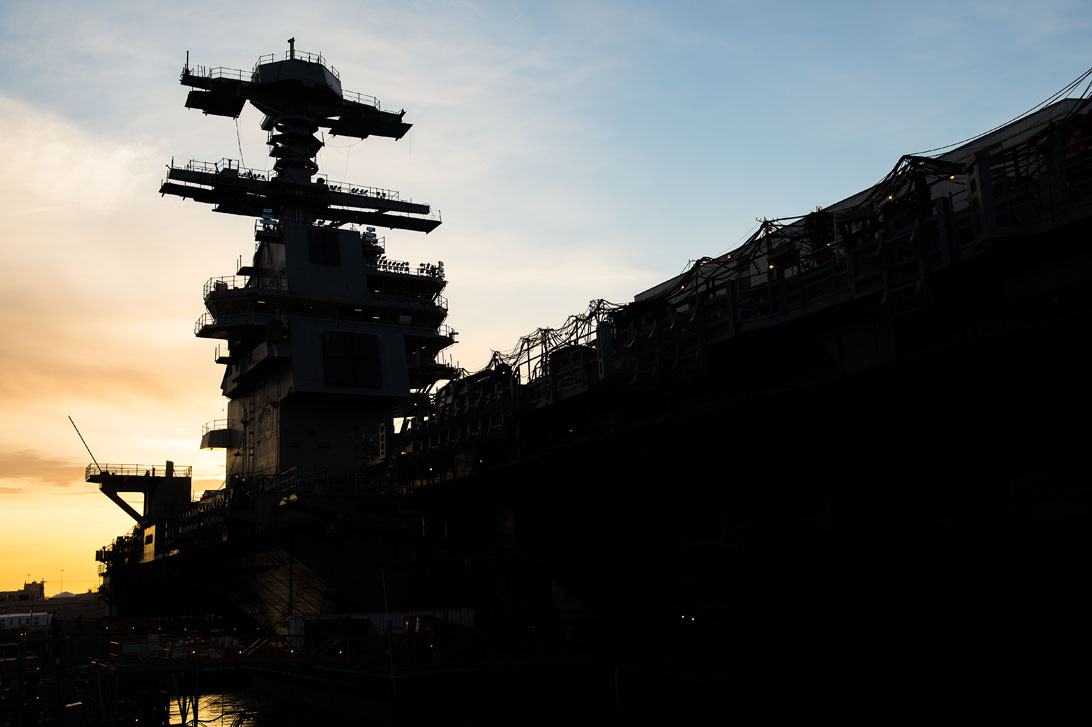
WASHINGTON, D.C. — Lawmakers have asked the Congressional Budget Office for data on what it would take to reach a 355-ship Navy over various periods of time, the chairman of the House Armed Services seapower and projection forces subcommittee said today.
Rep. Rob Wittman (R-Va.) told congressional and industry representatives at an Amphibious Warship Industrial Base Coalition event that CBO was working on tallying the cost over the coming decades.
“We have asked the Congressional Budget Office to give us scenarios about how we get to 355 ships over the course of time. How do we get there in 15 years, 20 years, 25 years, 30 years?” Wittman said.
“We want to see the progress that we can make, we want to understand how we devote the dollars, the resources to make sure we get there. An important part of that formula too is not just building the ships, but how do we address what’s called the tail? How do we make sure we have the Marines and the sailors well-trained onboard those ships when we bring those ships into the fleet? To me that’s an important part of it too, we want to make sure we have that, so we have a whole plan, a plan that we can easily attain to make sure we get the fleet where it needs to be, specifically with 38 amphib ships.”
Wittman later noted that maintaining the current fleet must be done “equally as fervent” as the desire to build more new ships.
“It’s important that we build ships, but it’s also equally important that we maintain the ships that we have. And I want to make sure that we stay on track to do that because if we are going to get the service life that we expect out of our ships, we have to be as aggressive in maintaining them,” he said.
“That’s going to be the key to getting to 355, so I want to make sure everybody understands that commitment not only to build ships but to make sure we’re aggressively maintaining those ships to make sure they don’t miss service availabilities; to make sure they get to the yard; to make sure the work, when they’re in the yard, gets done; and to make sure they go back to sea they have the full capability necessary to get the job done.”
At the event, Commandant of the Marine Corps Gen. Robert Neller told USNI News during a question and answer session that, if properly resourced, the Marine Corps could address current readiness issues, procure more aircraft and grow the force to support the additional amphibious ships Congress funds.
“There’s going to have to be a look at the timeline because none of this is going to happen over night. Even if you had the funding to increase the acquisition of airplanes, or even if you had the money to increase the throughput through fleet readiness centers or you had the money to build ships, it’s going to take time,” Neller said.
“So, there are certain ways to go faster: block buys; sustainable, consistent funding; all the things that, we know, those require decisions. So I’m confident that we’ll figure out a way to do it, try to get all these capabilities – first get the readiness situation fixed, acquire new systems and platforms, and then as was mentioned, you’ve got to be able to sustain.”
To begin moving towards this larger amphibious fleet, the Amphibious Warship Industrial Base Coalition sent a letter to Congress today asking for four things:
- Provide $1.83 billion for the construction of a 13th San Antonio-class amphibious warship, LPD 29. Committing to building LPD 29 will allow suppliers and builders to leverage the many advantages offered by a hot production line and supply chain and take advantage of the investments that have already been made in jobs, skilled workers and equipment.
- Move up the construction of the next-generation amphibious warship, LX(R), by two years, from 2020 to 2018. This will build on the significant investments made by Congress in the San Antonio-class of LPD amphibious warships, and in particular LPD 28, which is currently under construction.
- Provide funding for the purchase of long lead, class standard, and other critical path material for the construction of the first five LX(R)s. The advance order of material for these ships allows for cost savings, predictability, efficient ship production, and acceleration of ship deliveries for the Navy and Marine Corps. This action will also enable the industrial base, which includes numerous small and medium sized businesses across the country, to invest with certainty for the future.
- Accelerate funding to begin construction in 2021 of LHA 9 – the fourth America-class large deck amphibious warship. The current production gap between LHA 8 and LHA 9 is 7 years. This prolonged gap in production will result in a shutdown and then restart of the LHA production line at great cost to the nation and the U.S. Navy.





